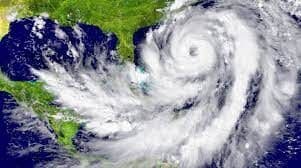Should I File A Wind Insurance Claim?

A Wind insurance claim is made by policyholders to their insurance companies when their property is damaged or destroyed by wind events such as hurricanes, tornadoes, and thunderstorms.
To file a wind insurance claim, policyholders must first report the damage to their insurance company as soon as possible after the event. This can typically be done by phone or online. The policyholder will need to provide their policy number, a description of the damage, and the date and location of the event. They may also be asked to provide photographs or other documentation of the damage.
Once the wind insurance claim is filed, an insurance adjuster will be assigned to assess the damage and determine the cost of repairs. The adjuster will visit the property and examine the damage, taking photos and making a written report. They may also review the policyholder’s insurance coverage and consult with experts such as engineers or contractors to determine the extent of the damage and the cost of repairs.

The insurance company will then review the adjuster’s report and determine the amount of the claim payment. The payment will be based on the policy limits and the policyholder’s deductible. The deductible is the amount the policyholder must pay out of pocket before the insurance company will pay the claim.
Policyholders should be prepared to provide receipts and other documentation of repairs or replacement costs when making a wind insurance claim. The insurance company may also require the policyholder to get estimates for repairs or replacements from multiple contractors before approving the claim.
It’s important for policyholders to carefully review their insurance policies and understand their coverage for wind events before a wind damage claim is necessary. This can help ensure that they have the necessary coverage and know what to expect when filing a claim.
Policyholders should file a wind insurance claim as soon as possible after a wind event has caused damage to their property. This is important because insurance policies typically have time limits for filing claims and waiting too long to file a claim could result in the policyholder losing their right to coverage.

Policyholders should also report the damage to their insurance company as soon as possible, even if they are unsure whether the damage is covered by their policy. The insurance company will review the policy and assess the damage to determine whether it is covered.
Policyholders should also make sure to document the damage by taking photos and keeping receipts for any temporary repairs or expenses that are incurred as a result of the wind event. This documentation can be helpful when filing a claim and can also help the insurance company assess the damage more accurately.
When filing a wind insurance claim, policyholders will need to provide their policy number, a description of the damage, and the date and location of the wind event. They may also be asked to provide photographs or other documentation of the damage.
It’s important to note that wind insurance coverage may be included as part of a broader policy, such as a homeowner’s insurance policy, or it may be purchased as a separate policy. Policyholders should carefully review their insurance coverage to understand what is and is not covered in the event of wind damage.

Policyholders should also be prepared to pay their deductible, which is the amount they must pay out of pocket before their insurance coverage kicks in. The deductible will be based on the policy limits and the policyholder’s insurance coverage.
In some cases, policyholders may need to get estimates for repairs or replacements from multiple contractors before their insurance company will approve the claim. The insurance company will review these estimates and determine the amount of the claim payment based on the policy limits, the policyholder’s deductible, and the documented damage. Overall, it’s important for policyholders to carefully review their insurance policies and understand their coverage for wind events before a wind damage claim is necessary. This can help ensure that they have the necessary coverage and know what to expect when filing a claim.